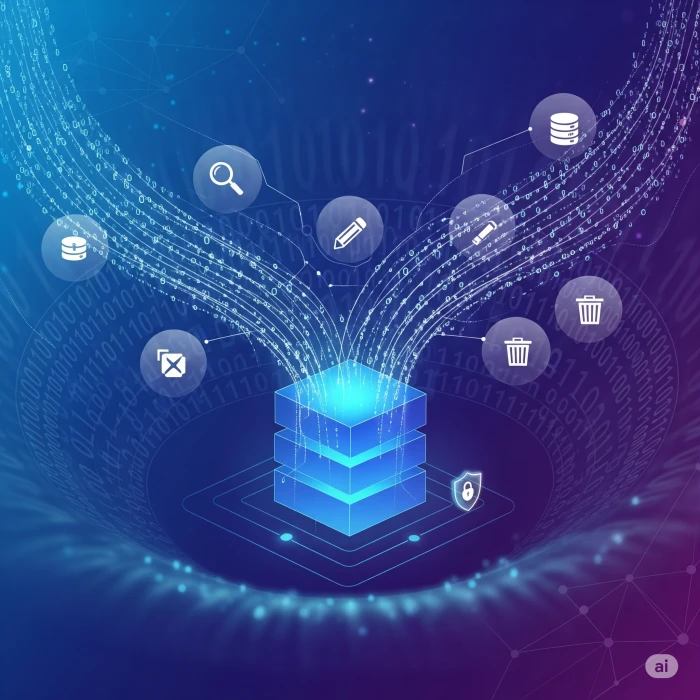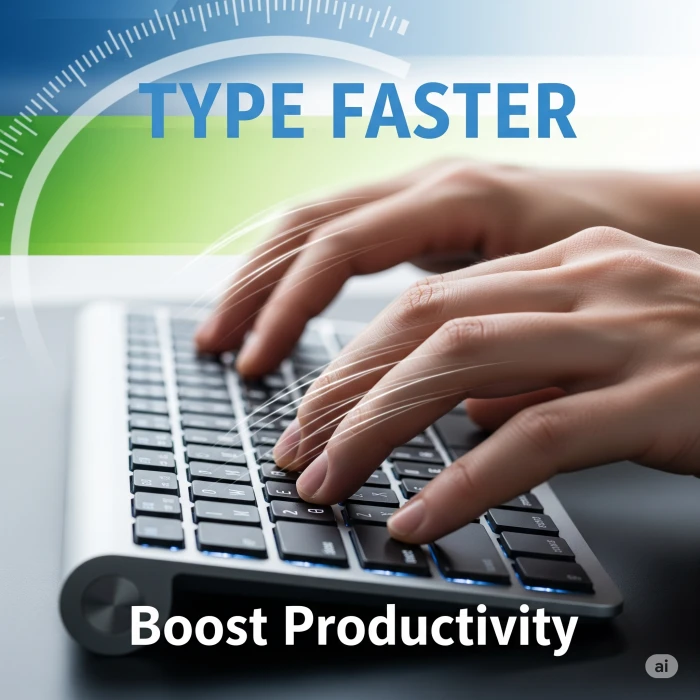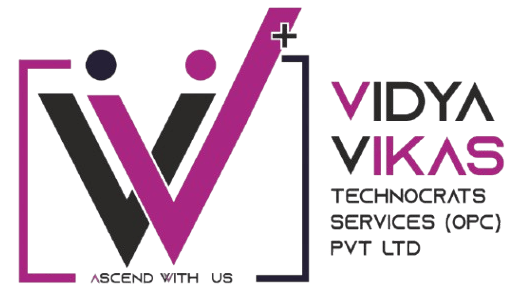IT-ITes
Admin VTECHNOCRATS
140

Database Management System
Database Management Software (DBMS) is a critical piece of software that acts as an interface between users (or applications) and a database. It allows users to create, define, manipulate, retrieve, and manage data efficiently and securely.
Purpose of Database Management Software
The primary goals of a DBMS are:
-
Data Storage and Retrieval: To efficiently store and retrieve large amounts of data.
-
Data Organization: To structure data in a logical and accessible manner.
-
Data Integrity: To ensure the accuracy, consistency, and reliability of data through rules and constraints.
-
Data Security: To protect data from unauthorized access, manipulation, or theft through access controls and encryption.
-
Data Sharing: To allow multiple users and applications to access and share the same data concurrently.
-
Backup and Recovery: To provide mechanisms for backing up data and restoring it in case of system failures or data loss.
-
Data Management: To facilitate tasks like performance monitoring, capacity planning, archiving, and data partitioning.
Types of Database Management Software
DBMS can be broadly categorized based on their data models:
-
Relational Database Management Systems (RDBMS):
-
Store data in tables with predefined schemas, rows, and columns.
-
Relationships between data are established through primary and foreign keys.
-
Use Structured Query Language (SQL) for data manipulation.
-
Best for: Structured data, transactional applications, financial systems, CRM, and any scenario requiring high data integrity and consistency (ACID properties).
-
-
NoSQL Database Management Systems:
-
Designed for handling unstructured, semi-structured, and rapidly changing data.
-
Offer flexible schemas and horizontal scalability.
-
Best for: Big data, real-time web applications, mobile apps, content management systems, IoT data, and scenarios where flexibility and high scalability are prioritized over strict consistency.
-
Sub-types include:
-
Document Databases: Store data in flexible, JSON-like documents (e.g., MongoDB).
-
Key-Value Stores: Store data as simple key-value pairs (e.g., Redis, Amazon DynamoDB).
-
Column-Family Databases: Store data in columns rather than rows, optimized for wide columns and distributed systems (e.g., Apache Cassandra).
-
Graph Databases: Store data in nodes and edges, ideal for representing relationships (e.g., Neo4j).
-
-
-
In-Memory Database Management Systems (IMDBMS):
-
Store data primarily in the computer's RAM, enabling extremely fast data access and processing.
-
Best for: Real-time analytics, high-frequency trading, caching, and applications requiring sub-second response times.
-
-
NewSQL Database Management Systems:
-
Aim to combine the best of both worlds: the relational model's ACID guarantees and consistency with the horizontal scalability of NoSQL.
-
Best for: High-performance transactional applications that require distributed architecture (e.g., CockroachDB, Google Spanner).
-
-
Cloud-Native DBMS:
-
Built to run entirely on cloud infrastructure, offering elastic scaling, high availability, and managed services.
-
Best for: Modern cloud applications, data warehousing, and reducing infrastructure overhead (e.g., Amazon Aurora, Google BigQuery, Snowflake).
-
Popular Database Management Software (2024-2025)
Here's a list of some of the most widely used and influential DBMS, encompassing various types:
Relational (SQL) Databases:
-
Oracle Database: A leading enterprise-grade RDBMS known for its unparalleled scalability, robust performance, security, and extensive feature set. Widely used in large organizations and critical systems.
-
MySQL: The most popular open-source RDBMS, acquired by Oracle. Known for its reliability, speed, and ease of use, making it a go-to choice for web applications (part of the LAMP stack) and small-to-medium businesses.
-
PostgreSQL: A powerful, open-source object-relational database system known for its extensibility, SQL compliance, and strong support for complex queries and data integrity. Preferred by developers for its advanced features.
-
Microsoft SQL Server: A robust RDBMS from Microsoft, offering strong integration with other Microsoft products (like .NET, Azure). Popular in enterprise environments for business intelligence, data warehousing, and various applications.
-
IBM Db2: An enterprise-level RDBMS from IBM, known for handling massive workloads with high performance, scalability, and security. Increasingly integrates AI and machine learning capabilities.
-
SQLite: A small, self-contained, serverless, and zero-configuration RDBMS. Ideal for embedded systems, mobile applications, and local data storage due to its simplicity and efficiency.
-
MariaDB: An open-source fork of MySQL, developed by the original MySQL creators. It offers enhanced performance, scalability, and security features, maintaining high compatibility with MySQL.
NoSQL Databases:
-
MongoDB: The leading NoSQL document database. Its flexible, document-based structure (JSON-like BSON) and horizontal scalability make it excellent for handling diverse and rapidly changing data, especially in web and mobile applications.
-
Redis: An open-source, in-memory data structure store used as a database, cache, and message broker. Renowned for its ultra-fast performance, making it ideal for real-time applications, caching, and session management.
-
Apache Cassandra: A highly scalable, distributed NoSQL database designed to handle large amounts of data across many commodity servers with high availability and no single point of failure. Best for applications needing continuous uptime and distributed data.
-
Elasticsearch: A distributed, open-source search and analytics engine often used as a NoSQL database for real-time indexing and searching of structured and unstructured data. Popular for log analytics, full-text search, and operational intelligence.
-
Amazon DynamoDB: A fully managed, serverless NoSQL key-value and document database service from AWS, offering single-digit millisecond performance at any scale.
Cloud-Native & Specialized Databases:
-
Amazon Aurora: A MySQL and PostgreSQL-compatible relational database built for the cloud, offering performance and availability comparable to commercial databases at a lower cost.
-
Snowflake: A cloud-based data warehousing solution known for its unique architecture, scalability, and ability to handle diverse workloads (structured and semi-structured data) with ease, using a pay-as-you-go pricing model.
-
Google BigQuery: A fully managed, serverless data warehouse and analytics platform from Google Cloud, designed for massive datasets and real-time insights.
Choosing the right DBMS depends heavily on the specific needs of a project, including data structure, scalability requirements, performance demands, budget, existing infrastructure, and developer expertise.


